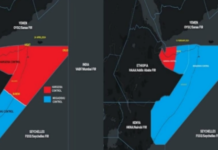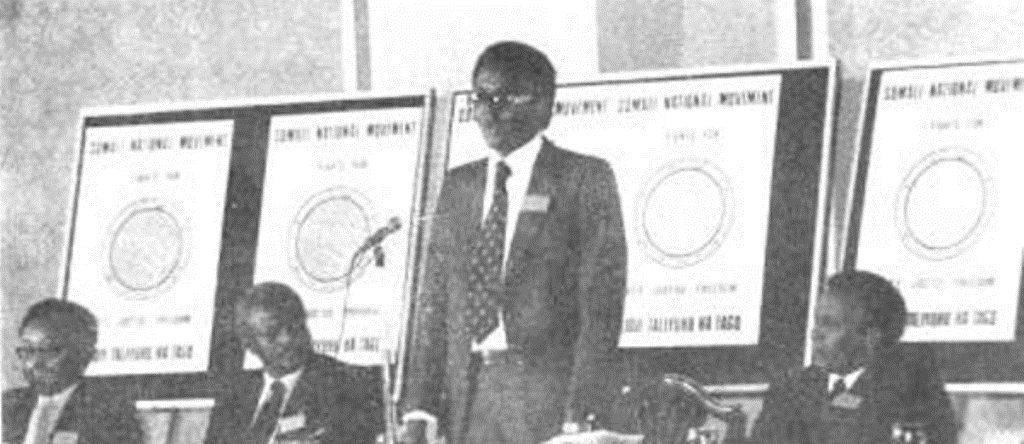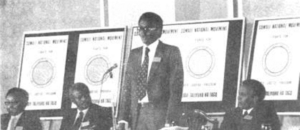By Dr. Hussein Nur
Somalia’s relationship with the Soviet Union ruptured abruptly and was brought to a sudden halt during the 1977/78 Somali-Ethiopian. From the champion of ‘Scientific Socialism’ and the arch-enemy of American ‘Imperialism’ in Africa, Barre turned to west especially the USA self-disguised as an actor acting as the prosecuted victim of “International Communism”. In reality, it was only a political gimmick with a ceremonial dance. He was playing a game. The Somali forces were defeated in the war as the Soviets turned sides providing arsenal (more superior than the one he used to give to Somalia) together with an alliance of armed forces from socialist satellite countries (Cuba, South Yemen, Libya etc.).
The defeat of the Somali armed forces was one of the chief catalytic factors that encouraged and speeded the rise of liberation struggles by organized dissident groups, firstly by the SSDF (Somali Salvation Democratic Front) and shortly afterward by the SNM (Somali National Movement by the people of the North. At the end of the war, disappointments and differences cropped up with the Barre’s leadership and diplomatic blunders. The existing internal dissent before the war was rekindled and openly surfaced giving rise to the emergence of opposition groups.
The formation of the SNM
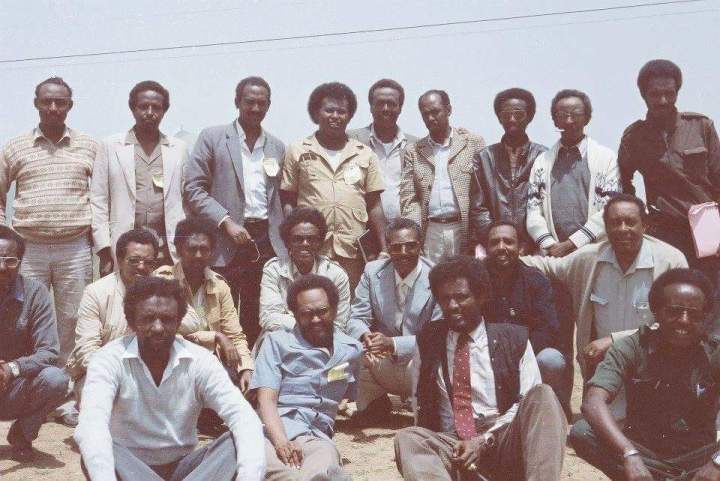
For more than three decades, the Somaliland-Somalia foundation of a relationship in the union was shaky and going with less confidence. Northern people finally completely lost trust. The democratic compact got threatened. Meanwhile, Barre leashed persistent campaigns of terror against Somaliland people in North ending with an upsurge of dissent. Disaffection and disenchantment rose on a steeply rising gradient and took an extra dimension. The economic and development disparity between Mogadishu and regions of Somalia and Somaliland, the injustices and extreme discrimination increased and led to form breeding grounds for the rising of armed dissidents resulting from the build-up of tensions in the north.
As part of that repression and direct discriminations of the northerners, a wholesale sacking of 75 top civil servants in government top portfolios and offices (Osman Ahmed Hassan, Omer Meygag Samatar, Hassan Meygag Samatar, Hassan Aden Wadadiid, Abdi Haybe, Said Abdillahi Hinig, Sheikh Yusuf Sheikh Ali Sheikh Madar, Ismail Hurre (Buba) few among others) was made by Barre in a single day. That formed another main catalytic factor for dissidence formation. Licences and Letters of credit were withdrawn from the northern merchants such Mohamed Hassan Dalab (aka ina Hassan Dalab) as far as I remember. In sum, the end product was a loss of loyalty for the government in the north which eventually escalated to an open dissent and preparations for the formation of a political movement.
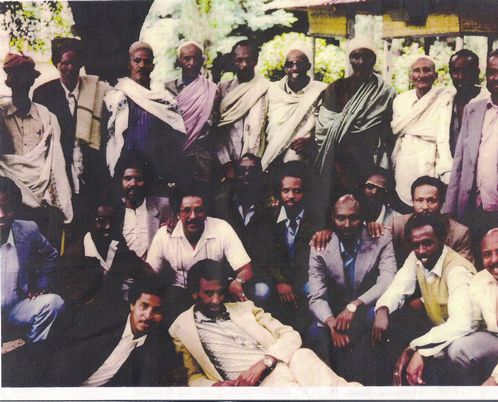
Secret talks were organised between northerners in the military force (Mohamed Hashi Lixle was the coordinator) with top government members (dissented Somali Revolutionary Council (SRC) and politburo members and high ranking government officers of northern origin such as Ismail Ali Abokor, Omer Arteh Ghalib, Jama Mohamed Ghalib, Suleiman Mohamed Aden, Dahir Warsame, Osman Ali Jama (Osman Kalun), Ahmed Mohamed Mohamoud Sillanyo (president of Somaliland between 2010 to 2017), and intellectuals (Suleiman Nuh, Abdi Ismail Duse and others). Mohamed Kahin Ahmed, a military colonel, provided a detailed account of the dynamics of the preparation and internal movements for the formation of the Somali National Movement opposition (as reported elsewhere I a forthcoming book – The Rebirth of Somaliland). The formation of the SNM as an opposition force developed in stages.
By the early 1970s, there was already an underground network but still not structured as an organization. The politicians and officers from the armed forces, high ranking government civil servants and the intellectuals used to meet up covertly and furtively. Similarly, secret activities were being conducted in the diaspora especially in the Gulf region, Europe, and North America. The different groups were intimately linked together. In Saudi Arabia, they were Hassan Aden Wadadid, Abdisalan Yasin, Mohamed Hashi Elmi and Ahmed Ismail Abdi (Duqsi) as the vanguard group. The group visited London to discuss with the UK-based intellectuals including Hassan Essa Jama, Abdirahman Abdulqadir, Ibrahim Sh. Muse Ahmed, Aden Warsame Said, Ibrahim Ali Weyrah, Abdillahi Ahmed Guleid and others. The Middle East group, especially the Saudi Arabia group, suggested the production of an opposition journal in the diaspora in London. However, that was not possible. In the second visit to London by the same group plans to launch an opposition organization in Britain was agreed as the requisite for an opposition organization became imminent. That subsequently led to the formation of the SNM opposition which was officially launched on 6th April 1981 in London. Ahmed Mohamed Gulaid and Ahmed Ismail Abdi (Duqsi) were elected as the Chairman and Secretary of the movement respectively. Soon afterward there was a need for establishing a military wing to carry an armed struggle and liberation.
Soon afterward, the SNM Office in London became the organization’s Headquarters and subsidiary offices were opened in other parts of the world across Europe and North America (Washington D.C, the USA headed by late Ibrahim Meygag Samatar) and throughout the UK (Cardiff, Sheffield, Liverpool, and Manchester) and Europe.

The people who were the force behind the formation of the SNM are divided into categories. One, a group was already out of the country. This group consisted of ex-civil servants, politicians etc. who left the country, many of whom in the Gulf countries, Europe and North America. Two, a strong group was inside the country consisting of politicians, intellectuals, government officers and civil servants, businessmen etc. in Mogadishu and in the North. However, there was a third component. That was the first armed organized group, an already armed militia group called AFRAAD, led by Mohamed Ali Farah and his friend Mohamed Ali Nur. They were both highly trained military officers and tacticians trained in Syria and with an experience of guerrilla warfare. They both trained with the Palestinian Liberation Organization (PLO) in Lebanon. Most of the military officers of northern origin were stationed in the North and Central regions. An important sub-group who provided support and working with the inside group was the business people, traders and merchants and the public who generously financed all activities.
There were internal coordinators for the SNM inside the country (Colonels Mohamed Hashi ‘Lihle and Ahmed Mohamed Hala’) between the high ranking government civil servants and officials including Ministers and intellectuals such as Abdi Ismail Duse and Suleiman Nuh and Dr. Mohamed Ismail Abdi (Diktorka).
The AFRAAD militia members were recruited from the local areas. It was a highly trained armed militia group initially incorporated with the WSLF sponsored by the Somali government to fight Ethiopia. AFRAAD had long-standing differences with the WSLF. It took part in the 1977/78 war with high performance. AFRAAD, being consisted of fighters of northern origin, broke away from the WSLF. Mohamed Ali and his militia became independent group fighting for the rights of the local people of northern origin. They camped at a tree named as the ‘Mohamed Ali Tree’ (between Geedbladh and Tog-Wajale) by the border with Ethiopia though moved later to a place called ‘Siyaarada’ on the Ethiopian side of the border. In the North, there was an important sub-group, the students in schools who dared later to conduct persistent open public protests using stone throwing, intifada style.
In early 1982 in Mogadishu, the SNM decided to secretly support 8 officers from the national army and help them to defect to join the SNM in Ethiopia. The first wave five military officers made the defection (from the Somali army) successfully. In January 1982, the first two officers who defected were Colonels Aden Sheikh Mohamed (Aden Shine) and Ahmed Dahir Nur (Ahmed Dhagax). While on holidays, they managed to cross the border to Ethiopia at a place known as ‘Qudhaca’ to join the SNM in Ethiopia. In February 1982 Colonel Mohamed Kahin Ahmed (the current Minister of Interior of Somaliland) defected after them. He was successfully followed by a wave of officers in different time frames. Immediately after Mohamed Kahin, three other colonels joined us in Ethiopia. They were the three Adams: Adam Musa Jibril, Adam Suleiman, and Adam Mohamed Samakab. Within a short period, groups of high ranking officers from inside and abroad and ex-civil servant civilians living in the diaspora (especially the Middle East) joined us in Ethiopia as delegates for an SNM conference from different parts of the world. From London came the first Executive Committee members of the SNM (Ahmed Ismail Duqsi who was the Acting Chair and Secretary at the time, Hassan Essa Jama, and others), others from the Arabian Gulf countries, Egypt (Cairo) etc. Among the high ranking officers who joined us were: Abdulqadir Kosar, Ali Ismail (Ali Hayan), Abdi Ibrahim (Jaalladiid) from Qatar; Musa Nadif, Madaxdiid, Abdillahi Abdi Obsiye (Uddo), Dayib Gurey, Musa Bihi Abdi, Abdillahi Hussein ‘Dhegaweyne’, Abokor Ismail Hassan Mattaan (Abokor Shadh-yare), Shakib Suldan Abdulqadir, Gacmadheere, Salebaan pilot, Ismail Aden Filiste, Tarandad, Mohamed Mirre, Hussein Dheere, Abdirahman Huunsho, Mohamed Ali Farah Food, Hassan Selim, Abdisamed, Abdillahi Askar and many others. Most of them were in Mogadishu for transfers from the North by the Division Commander of the North, General Mohamed Gani as suspects for defections.
The SNM first conference at Nazaret, near Addis Ababa. The civilians who attended were from Saudi Arabia. Hassan Adan Wadadid, Mohamed Hashi Elmi, Osman Ahmed Hassan, Hassan Khalif, Ahmed Kayse (from Jedda) and Zaki Ahmed, Mohamed Yussuf Adde and Abdisalan Yasin (from Riyadh). Intellectuals like Mohamed Warsame Hadrawi, Rashid Abdillahi (Gadhweyne), Mohamed Hashi Dhama (Gariye), Farah Ali Gamute, Yasin Nur, Gariye, Abdirahman Yusuf Duale (Boobe) and Mohamed Jama also attended. Soon afterward a wave of intellectuals arrived from the inside the country. Dr. Mohamed Ismail Abdi (Diktorka was one of them. The first military officers joined from the diaspora included Abdulqadir Kosar (from Qadar), Musa Bihi (the current president) from the USA, Ali Hayan and others.
The first batch of commando training school was established at Babuli by Colonel Ahmed Mire. The military wing was finally in form. Operations started soon after recruitments and short training and refresher courses for the fighters.
To be continued










